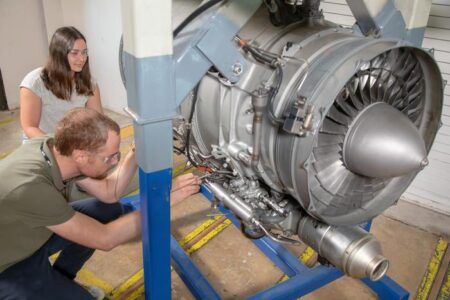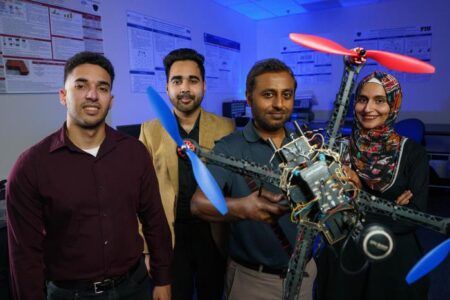The build of the static test aircraft for the T-7A Red Hawk development program has achieved a key milestone with the joining of the front fuselage to its aft section.
The Boeing and Saab-developed T-7A Red Hawk is a trainer jet for the US Air Force being developed using a number of new digital engineering processes, agile software development techniques and an open architecture mission system under Boeing’s eSeries moniker.
The aircraft, which will be used for static test, is the first engineering and manufacturing development test asset to be spliced. It will be followed by five engineering and manufacturing development jets as part of 351 T-7A Red Hawk trainer jets to be produced for the US Air Force.
The first production T-7A is expected to be delivered in 2023. Two existing pre-production test aircraft are currently being flight tested to verify performance for the US Air Force.
The aft fuselage for the static test aircraft was designed and built by Saab in Linköping, Sweden, under a joint development agreement with Boeing. After making the journey of more than 4,500 miles (7,200km) to St. Louis, Missouri the aft section was lined up perfectly to the forward fuselage by Boeing aircraft mechanics.
The two sections of the aircraft were joined in less than 30 minutes using a digital process, 95% less time than traditional splices, said Boeing.
Chuck Dabundo, vice president and program manager of Boeing T-7 programs said, “This moment marks a key stage in the evolution of the T-7A Red Hawk. Employing digitally advanced manufacturing and build techniques developed by Boeing over the past two decades, we are bringing this trainer to future pilots sooner than ever before possible and with greater quality.”
Andrew Stark, Boeing T-7A Red Hawk production director said, “What we’re seeing in this new evolution of digitally designed, engineered and manufactured aircraft is a 50% improvement in overall production quality and as much as a 98% reduction in drilling defects. It’s a new way of producing airplanes with improved quality throughout the whole journey.”
The T-7A Red Hawk made its first flight in 2016 after three years of development thanks to a 75% improvement in first-time engineering quality, an 80% reduction in assembly hours and a 50% reduction in software development time compared to traditional aircraft development programs, according to Boeing.
The aircraft features a modular design to make maintenance easier and immersive pilot training that links to ground-based training systems for 4th and 5th-gen fighter aircraft.





